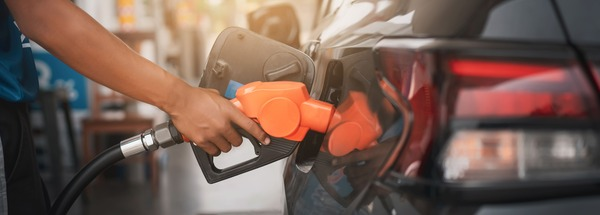
Can You Pump Gas with the Car On? Yes but maybe you shouldn’t.
Can You Pump Gas with the Car On? Yes but maybe you shouldn’t.
Can you pump gas with the car on? Although you can, it’s unsafe and can be illegal. Discover why turning off your engine before refueling is a critical step for your safety and is dictated by law in many places.
Key Takeaways
- Pumping gas with your car running can increase the risk of a fire due to engine heat or sparks igniting gasoline vapors, though incidents are not extremely common.
- Gasoline vapors pose health risks, contribute to air pollution, and can cause fires or explosions under certain conditions, making it important to turn off your engine while refueling.
- Refueling with an engine on can damage your car’s vapor recovery system, plus it’s illegal in many places according to the International Fire Code, which could lead to fines.
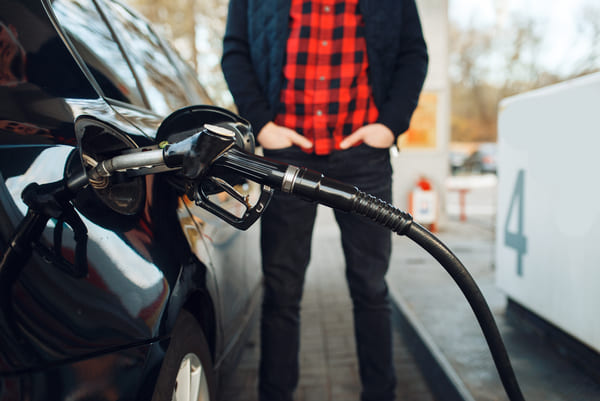
Person refueling car at gas station
Understanding the Risks of Pumping Gas with a Running Car
Although not extremely hazardous, the act of fueling a car with the engine still running can lead to potential dangers. The heat or sparks emitted by an active engine can set off a series of events that could result in igniting gasoline vapors and potentially causing a fire. This may sound concerning, but let’s examine these risks more closely for better understanding.
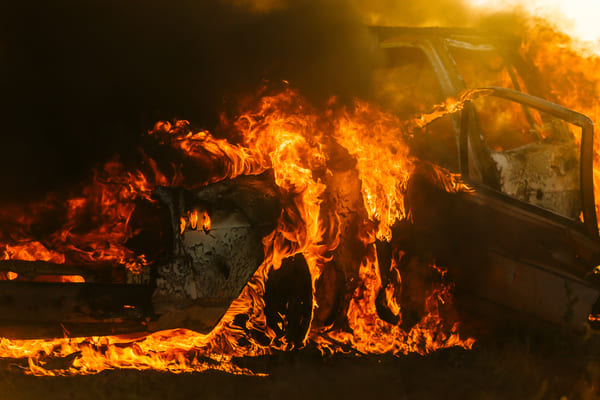
Car engulfed by flames
Flash Fire Hazards
Pumping gas can quickly become a dangerous situation if certain precautions are not taken. Gas stations, known to be potential fire hazards due to the presence of hot car parts and stray sparks, see an alarming number of fires caused by vehicle malfunctions or electrical failures – accounting for 56% of all incidents from 2014 to 2018.
The fuel itself presents risks as well with its highly volatile nature and emission of flammable vapors that can ignite when exposed to heat sources or sparks. Running your engine while pumping gas only increases these chances, making it crucial for drivers to stay vigilant at all times. Static electricity is another factor responsible for over half of the fires at gas stations every year.
It’s important never underestimate the danger posed by flash fires in such settings. In moments where time seems scarce and rushing becomes inevitable during a trip through a gasoline station convenience store, always remember that compromising safety just isn’t worth saving those few precious minutes.
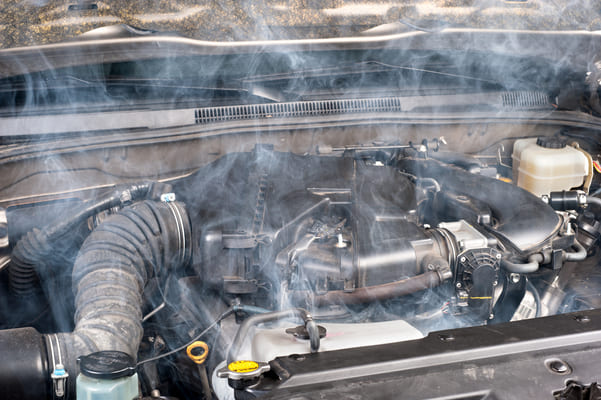
Gasoline vapors near a car engine
Gasoline Vapor Dangers
Focusing on the subject of gasoline vapors, not only do they pose a fire hazard, but they also have detrimental effects on our environment and well-being. Inhalation of these fumes can lead to various health problems such as nose and throat irritation, headaches, dizziness, nausea, eye irritation, and breathing difficulties. In severe cases, it may even cause permanent damage to organs.
Moreover, gasoline vapor emissions contribute significantly to air pollution by releasing harmful chemicals into the atmosphere.The risk for fires or explosions increases when gas vapors come in contact with hot surfaces or sparks near gas pumps.Optimal conditions like confined spaces,fire sources nearby, and static electricity discharge heighten this danger.
Between 2014 and 2018, the annual number of reported incidents involving gasoline station fires reached around 4150.These occurrences resulted in three fatalities each year, on average.As well as causing significant property damages amounting to up to $30 million per annum.Henceforth, this evidence clearly indicates that underestimating the hazards associated with gasoline vapor would be unwise.
Vehicle Damage Possibilities
Did you know that refueling your car with the engine still running can cause damage to your fuel tank? This action can disrupt the vehicle’s vapor recovery system, which is responsible for controlling fumes during refueling.
Signs of a damaged vapor recovery system include a saturated charcoal bed or complications from overfilling the gas tank. Repairing this issue is neither easy nor inexpensive for gas station owners, who may have to pay between $250 and $507 depending on the extent of damage.
It’s important to consider potential consequences not only in terms of convenience but also financially when deciding whether or not to leave an engine running while refueling at a gas station. Neglecting these precautions could lead to harm both for yourself and your car’s wellbeing.
State Laws and Prohibitions
It is important to be aware that refueling with your engine running may not only pose safety risks, but it could also go against the laws and regulations of many jurisdictions. According to the International Fire Code, turning off engines while fueling vehicles helps prevent potential hazards such as heat from exhaust pipes igniting gasoline fumes. Violating these laws can result in penalties and some places even have specific fire codes prohibiting unattended gas pumps during refueling. So remember both safety and legal compliance when stopping at a gas station.
Next time you pull into a gas station, keep in mind any applicable laws or prohibitions regarding refueling procedures. It’s best to always err on the side of caution by following proper guidelines for handling potentially dangerous substances like gasoline near hot engines.
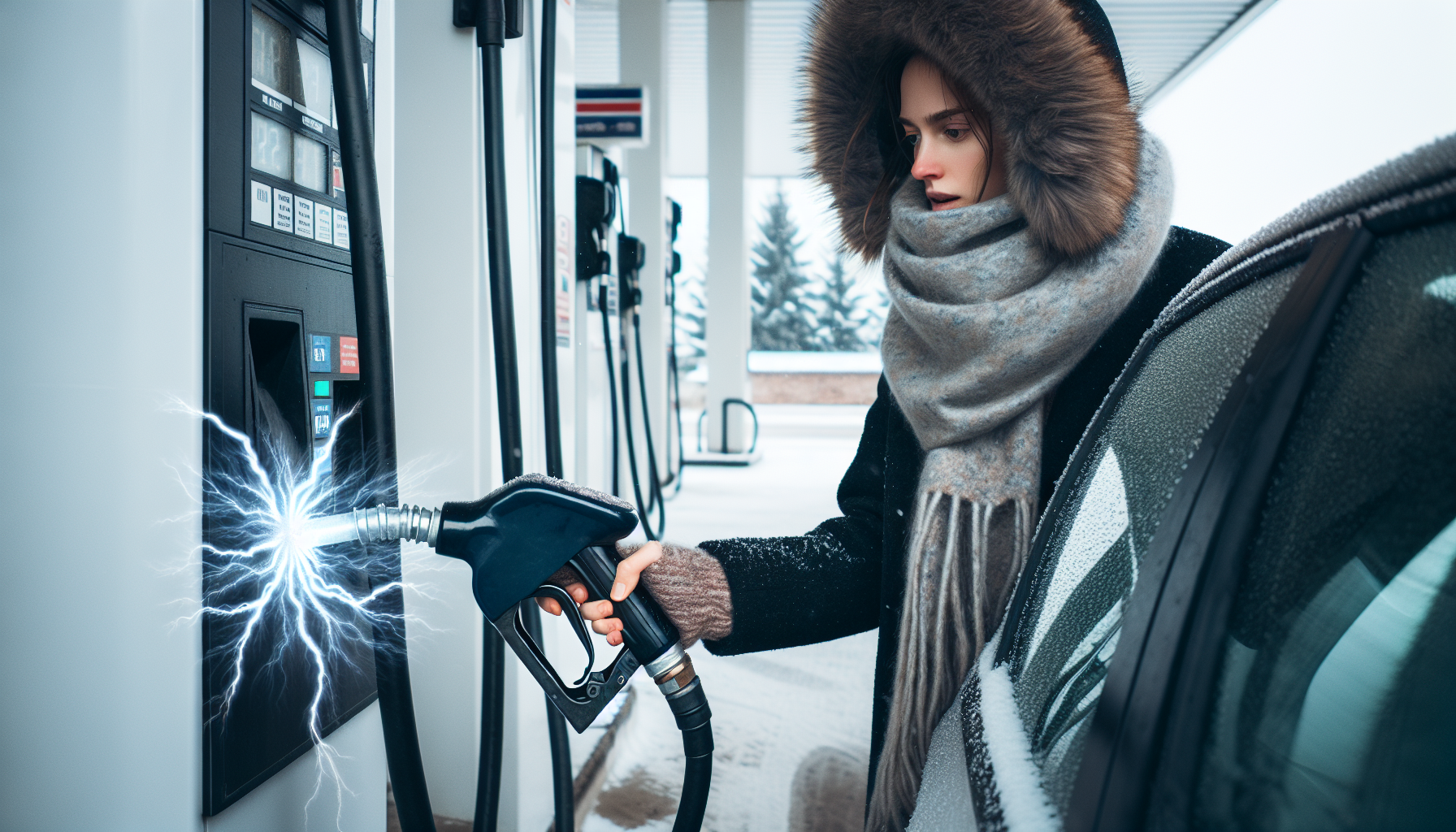
Person touching metal to ground static electricity
Static Electricity Precautions
It may seem harmless, but reentering your car while pumping gas can lead to the buildup of static electricity. When combined with gasoline fumes, this could potentially create a fire hazard if ignited by contact with the pump nozzle.
Luckily, there is a simple solution! Before grabbing the nozzle at the gas pumps, make sure to touch something metal outside your car first. This will help discharge any built-up static electricity and reduce the risk of igniting flammable gas vapors.
Always prioritize safety when refueling. A little precautionary measure like discharging static electricity before fueling up can greatly minimize dangerous situations that could arise during or after filling up your vehicle’s tank.
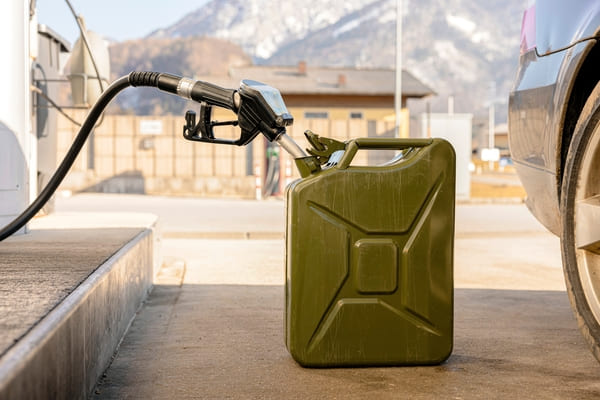
Refueling approved gasoline container
Approved containers for putting in gasoline
When storing gasoline, make sure to use containers that are approved for this purpose. These containers should be made of metal or polyethylene and have flame arresters installed. This is important because it helps prevent a potential fire from spreading by cooling down any flames and stopping them from passing through the container.
Always ensure you are in a well-ventilated area when handling gas cans, and keep your distance from the nozzle while filling them up. To avoid any risks related to static electricity, place the can on the ground before filling it up – never attempt to fill a gas can while it’s inside your car.
By following safety guidelines such as using proper storage containers for gasoline and taking precautions like avoiding sparks caused by static electricity during fueling, you not only protect yourself but also those around you against accidents involving flammable substances like gas vapors. Remember these tips every time you handle petrol products!
Summary
While it may seem convenient to pump gas with your car engine running, the potential dangers outweigh any time-saving benefits. The risk of flash fires and inhaling harmful gasoline vapors should not be underestimated, along with possible damage to your vehicle and legal repercussions. To avoid accidents, it is important to also consider precautions against static electricity and proper storage of gasoline in approved containers.
In the end, risking a few minutes saved by leaving your engine on while pumping gas is simply not worth it. Always prioritize safety when refueling at the pump – remember: turn off that engine!
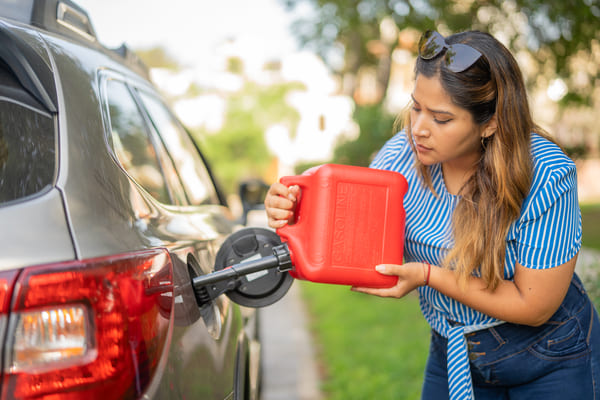
Person refueling a car
Frequently Asked Questions
Can I pump gas with my car running?
It is not safe to pump gas while your car is running due to the potential for a fire. The heat and electricity generated by the engine can ignite any gas vapors present, making it crucial that you turn off your vehicle before pumping gas.
To avoid any accidents or fires, always remember to shut off your car’s engine before starting to pump gas. This precaution will prevent any heat or electric sparks from causing ignition of the gasoline.
Do I need to turn off car when pumping gas?
It is important to shut off the engine when pumping gas in order to minimize the chance of a spark from static electricity igniting gasoline vapors. This precaution should be taken due to the potential risk posed by mixing gas and electricity while pumping.
What are the chances of your car blowing up while pumping gas?
There is a low probability of your car exploding while refilling gas. To Minimize the danger of fire, it’s important to touch the nozzle on the filler tube before pressing down on its handle. This simple precaution can help prevent any potential sparks from setting off fumes in the gasoline (Source: internet).
What should I consider when filling up a gas can?
It is important to prioritize safety when filling up a gas can. Make sure to use an approved container and find a well-ventilated area for the task. Keep your face away from the nozzle during filling and place the can on the ground to prevent static electricity issues.
Take precautionary measures by using appropriate containers, selecting proper ventilation for this activity involving gas, keeping distance between your face and nozzle while refilling, as well as positioning the gasoline receptacle on solid ground.


Leave a Reply